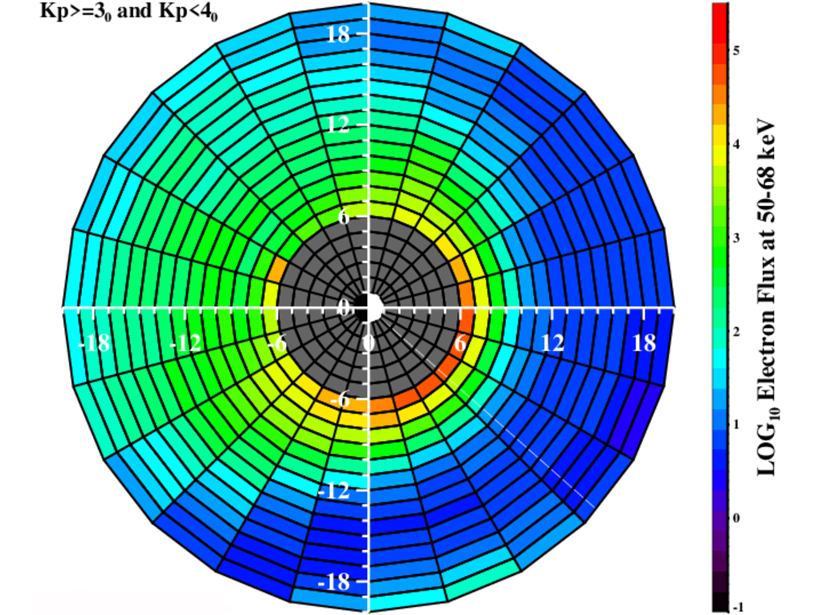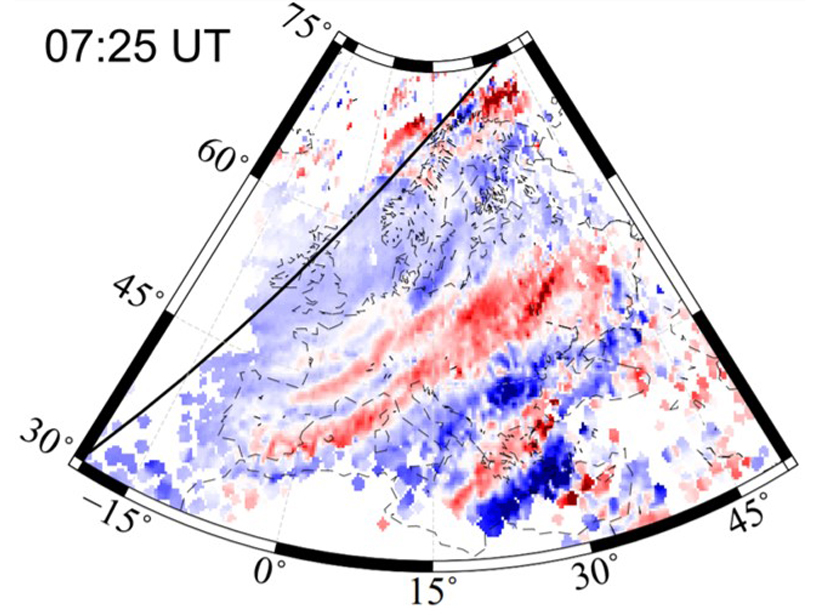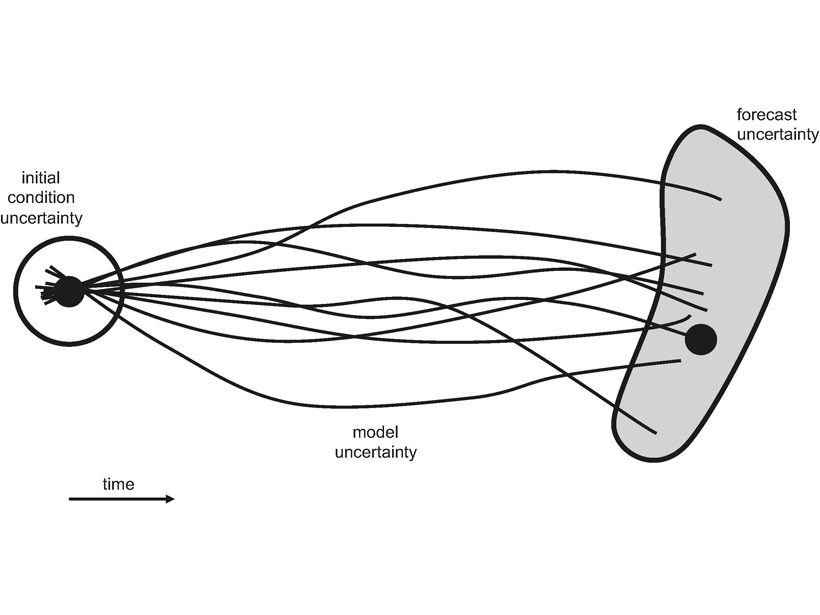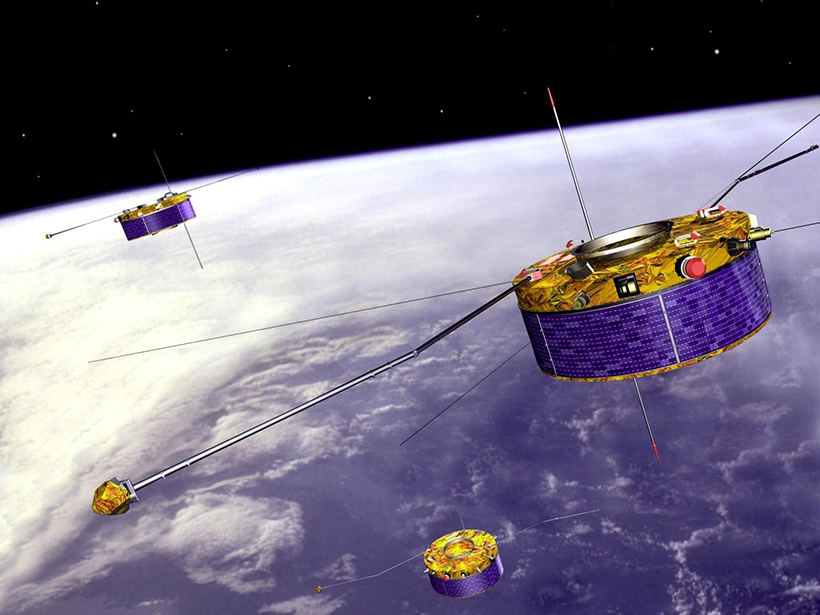Measurements of very-low frequency radio signal phase and amplitude can detect upper atmosphere changes caused by solar flares, enabling us to monitor flare occurrence and intensity.
Space Weather
Extending the Envelope for Known Safe Locations in Space
When unattached electrons collide with spacecraft, the build-up of electric charge can cause malfunctions, but recent observations model near-Earth regions that are likely safe zones.
New Real-Time Model May Protect Astronauts from Space Radiation
Solar energetic particle events pose an acute risk to space travelers outside the protection of Earth’s magnetic field. A new initiative aims to quantify the danger.
First Multi-Decade Simulation of the Earth’s Radiation Belt
A new simulation of the Earth’s electron radiation belts captures large-scale variations over nearly three solar cycles, and replicates primary cyclical features and extreme behaviors.
Plasma Activity Around Sunspots May Foreshadow Solar Storms
A new study identifies possible precursors to space weather in the regions encircling sunspots.
Seeing Waves: GNSS Tracking of Waves in the Upper Atmosphere
Dense GNSS networks enable scientists to track large-scale waves traveling through the upper atmosphere, away from sources in the auroral zone and the day/night terminator.
Why Space Weather Needs Ensemble Forecasting
Weather forecasts combine many model predictions to create an ensemble that is more accurate than separate models, a technique now starting to be applied in space weather science.
How Two Massive Space Storms Zapped Alaska
New study reveals how space weather causes rapid fluctuations in Earth’s surface geomagnetic field.
Forecasting the Threat from the Sun
Ensemble techniques are opening a path toward space weather forecasts that give deeper understanding of the risk posed by each solar storm that approaches our planet.
How Space Storms Affect the Satellite Superhighway
A powerful numerical model reveals how space weather disturbs magnetic field at geosynchronous orbit.










